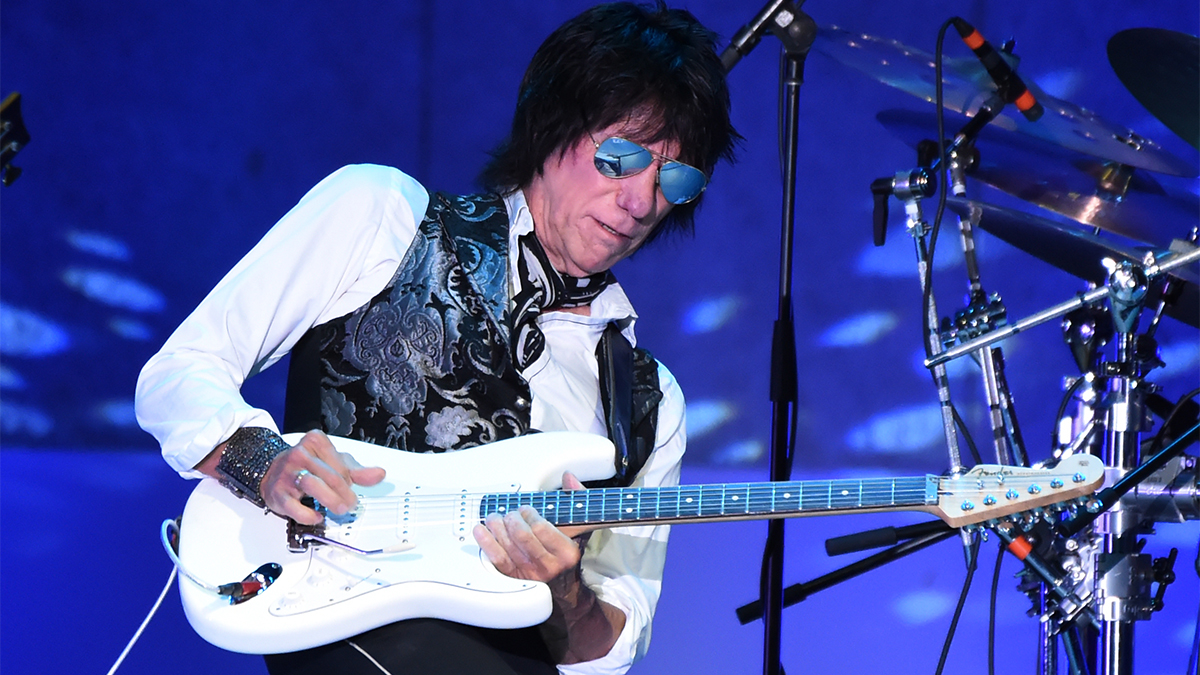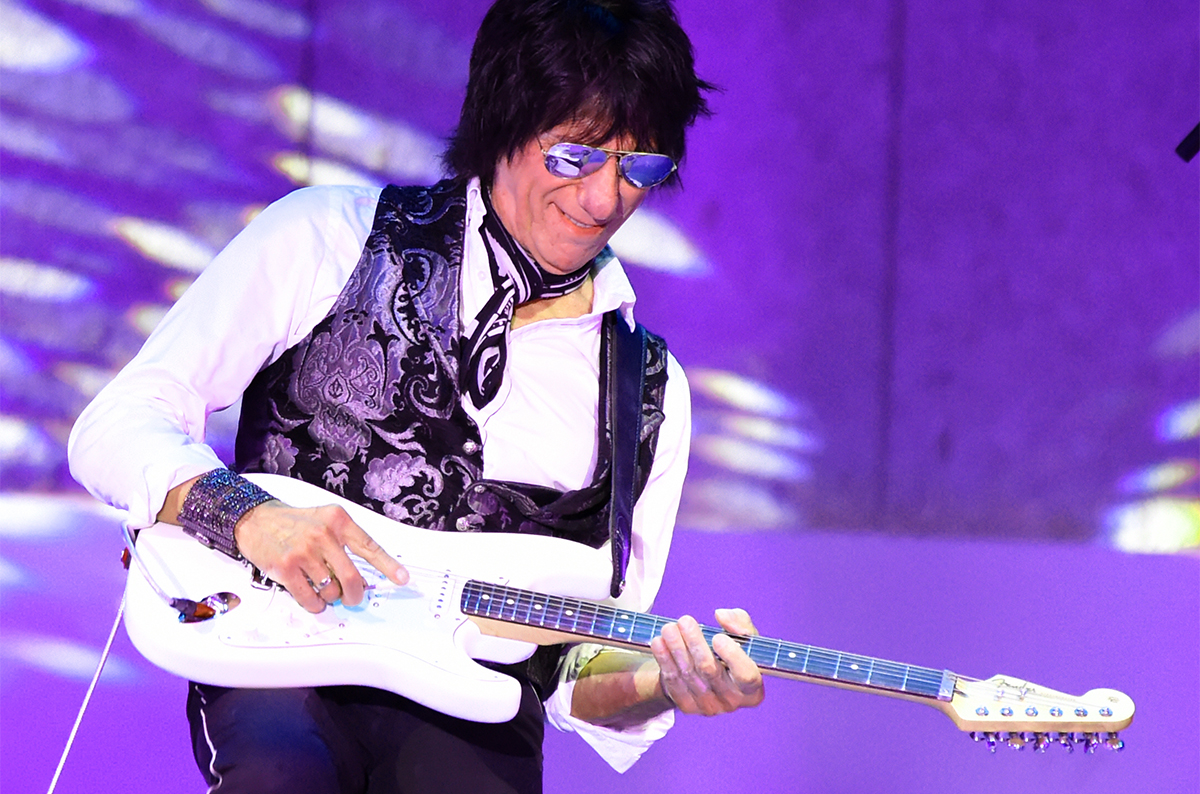“What makes you think they stay in tune?” Jeff Beck on his microtonal guitar approach and how he set up his Fender Stratocaster for precision pitch bending
The late guitarist shared insights into his influences and techniques in an interviewer for our May 1999 issue

Part of the beauty of Jeff Beck’s late-era electric guitar work is his combination of vibrato-arm pitch bending and left-hand string bends. Using them together, Beck made his guitar playing as expressive as that of a vocalist.
Taking it further, Beck — whose guitar collection sold in London last week for a record smashing $10.7 million — had stopped using a pick by this point in his career. With all the fingers of his right hand available to him, he could execute a remarkable range of dynamics and plucking techniques that, together with the “between the notes” approach of his string bending, allowed him to evoke the sounds of Eastern music and bring a degree of harmonic mystery to his music.
As he explained to Guitar Player in an interview in our May 1999 issue, the Eastern influence in his music was in part down to the influence of others.
“That's because I've been so impressed by Eastern music and John McLaughlin,” he explained. “Guys like that are sent here for a purpose — besides to piss you off — as the standard that you have to look at. They exist — they're not figments of your dreams. You can go out and buy the records, listen to them, and learn from them. That's exactly what I did.”

The record that made the most dramatic impression on Beck — completely altering his approach to the guitar — was not by McLaughlin but by the Bulgarian State Radio & Television Female Vocal Choir. The internationally renowned ensemble became famous in the 1980s for their modern takes on traditional Bulgarian folk songs.
In addition to their use of non-Western scales, the choir has uncanny microtonal precision, which they employ not only in their vibrato but also in harmonic development of their melodies. The resulting melodies, combined with the pureness of their voices, is mesmerizing and at times haunting, and it captivated Western audiences when they were first exposed to the choir on the 1986 Nonsuch album Le Mystère des Voix Bulgares (The Mystery of Bulgarian Voices). The record was actually a reissue of an album first released in 1975 by Disques Cellier, the label of Swiss ethnomusicologist and producer Marcel Collier, who spent 15 years gathering the recordings.
Beck was among those who was inspired by the album.
All the latest guitar news, interviews, lessons, reviews, deals and more, direct to your inbox!
“I got the Bulgarian Women's Choir CD and I thought, Well, maybe I should just sit and listen to this for about ten years,” he told Guitar Player. “That CD is the most agonizingly wonderful thing. It had nothing to do with rock and roll, but it impressed me just as much — a part of my psyche moves into tears every time I hear it.”

As Beck told Paul Guy in a 1999 interview for Fuzz magazine, he attempted to have the album transcribed. “I was trying to get somebody to transpose that on to sheet music, so that I could play all the parts on guitar. And then I suddenly thought, What a wasted effort, why not just listen to them.”
Better still, Beck began bringing the most evocative elements of the choir’s music — non-Western scales and microtonality — into his music. His uncanny precision with his Fender Stratocaster’s tremolo bar allowed him to sound notes and glide between them.
“From a technical standpoint, I inadvertently discovered a way of getting microtones and such out of the Strat and making music out of them,” he told Guitar Player. “Up to that point, the Strat was Buddy Holly's guitar — and Cliff Gallup's of the Blue Caps — and was played very conventionally.”
An excellent example of Beck’s whammy-bar precision can be heard on the Nitin Sawhney composition “Nadia,” from the guitarist's 2000 release, You Had It Coming. Although it sounds like Beck is using a slide here, it’s all done with whammy bar.
As Beck revealed in that same Guitar Player interview, it takes a special setup of his tremolo bar to keep the strings as close to proper pitch as possible. When asked how he keeps his strings in tune with the technique, Jeff had a colorful, but helpful, answer.
“What makes you think they stay in tune?” he asked. “Fender has come a long way in keeping the tuning problems at bay, but a new string will still always go off until you've stretched it. The roller nut on my guitar has a twin roller on the first three strings — which helps to keep those strings in check — and the tremolo is a standard spring tremolo.
“It's not like the Floyd Rose which slackens them off until they're dangling on the floor. I think that's a complete waste of time. I just make sure that the spring tension on the tremolo arm is exactly what I want. If that isn't right and there isn't enough upward motion — or if it goes down and bottoms out — I'm in trouble. It's basically down to the string thickness — if the thickness of one string is off, it throws the whole thing out."

Although Beck was rarely seen without a Fender Stratocaster in his hands later in his career, early on he used a range of models, including a Gibson Les Paul. Beck's "Oxblood" Les Paul — feature on the cover of his 1975 album, Blow by Blow — was among the guitars that sold at Christie's auction. It fetched more than $1,315,708, making it the most expensive Gibson Les Paul ever sold. Duane Allman's 1957 Gibson Les Paul previously held the record. It sold for $1.25 million in 2019.
